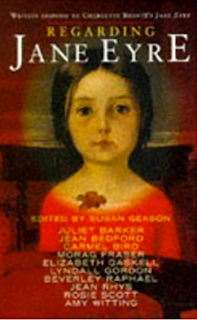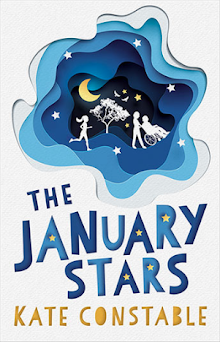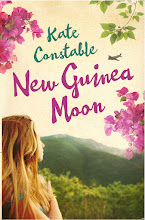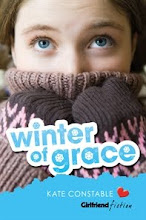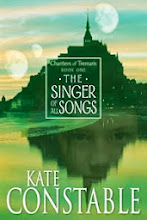I love Irvin Yalom. His wry and wise observations on the work of psychotherapy, and by extension, the work of being human, are entertaining, moving and enlightening, and at the age of nearly ninety, he is still going strong. The Gift of Therapy is structured as a book of tips for therapists, but it makes interesting and educational reading for the lay person, too. There are 85 tips, each explored in very short chapters, most less than three pages long. Some examples: Avoid Diagnosis (Except for Insurance Companies); The Here-and-Now: Use It, Use It, Use It; On Being Helped By Your Patient; Freud Was Not Always Wrong; Learn About the Patient's Life From Dreams.
Yalom draws freely from his decades of experience, admits his own mistakes, uses humour and surprises, and makes me long to have him as my own therapist. I abandoned a course of therapy more than twenty years ago (when Medicare paid for psychiatrists, but not psychologists), and reading this book has made me think about my (not entirely satisfactory) experience in a new light. Maybe I should have persisted -- I jumped ship before it had a chance to do me any good.
31.10.18
28.10.18
How To Write A Novel Using the Snowflake Method
I can't remember exactly when or how I discovered the Snowflake Method. Probably I was stuck one day and in despair googled 'how to write a novel.' I came across Randy Ingermanson's website, which contains a skeleton outline of his theory. The basic premise is that you can build a snowflake, an incredibly complex and intricate structure, by building upon a simple shape that becomes more elaborate with each step. Therefore, you can build a novel by starting with a simple sentence and elaborating it until -- ta da! -- you end up with a book.
Over the years I have found the snowflake method very useful, generally when I've amassed a messy pile of material and ideas, but I'm having trouble shaping it all into a coherent form. The first step is to summarise your plot in a single sentence -- easier said than done! I have found this incredibly productive when I'm attempting to decide exactly what the hell this story is supposed to be about. (Think of this as the description of your book when it appears in the bestseller chart.) The next step is to summarise your story in a four sentence paragraph -- replicating a four act structure, each act ending in a disaster. Now this might not suit your novel, and it doesn't always suit mine, but the paragraph summary is also a useful tool (think of it as the back cover blurb of your published book). Then you start on character work, and from then on you alternate plot and character steps until by step nine you have a list of scenes and a plan for each scene. Then all you have to do is start writing!
I've never done all the steps, and I find some more useful than others. For instance, when it comes to Step 7, I replace Ingermanson's "Character Charts" with a monologue in that character's voice. But this time, I was starting to piece together some ideas for a junior fiction novel and I saw that Ingermanson's manual was only $4 on the Kindle, and I thought, what the hell, why not try and do it properly this time?
So I did. And it was good. I still adapt Step 7 into my monologues, and while I write a Step 8 Scene List, the Step 9 Scene Plan doesn't work for me and I abandoned it halfway through (I did give it a crack though). I spent about a week doing the Snowflake. And now I've started writing!
Over the years I have found the snowflake method very useful, generally when I've amassed a messy pile of material and ideas, but I'm having trouble shaping it all into a coherent form. The first step is to summarise your plot in a single sentence -- easier said than done! I have found this incredibly productive when I'm attempting to decide exactly what the hell this story is supposed to be about. (Think of this as the description of your book when it appears in the bestseller chart.) The next step is to summarise your story in a four sentence paragraph -- replicating a four act structure, each act ending in a disaster. Now this might not suit your novel, and it doesn't always suit mine, but the paragraph summary is also a useful tool (think of it as the back cover blurb of your published book). Then you start on character work, and from then on you alternate plot and character steps until by step nine you have a list of scenes and a plan for each scene. Then all you have to do is start writing!
I've never done all the steps, and I find some more useful than others. For instance, when it comes to Step 7, I replace Ingermanson's "Character Charts" with a monologue in that character's voice. But this time, I was starting to piece together some ideas for a junior fiction novel and I saw that Ingermanson's manual was only $4 on the Kindle, and I thought, what the hell, why not try and do it properly this time?
So I did. And it was good. I still adapt Step 7 into my monologues, and while I write a Step 8 Scene List, the Step 9 Scene Plan doesn't work for me and I abandoned it halfway through (I did give it a crack though). I spent about a week doing the Snowflake. And now I've started writing!
25.10.18
Just A Girl
I'm a big fan of Jane Caro, I love her columns in The Age and I love her forthright, no-nonsense appearances on Gruen and the Agony series. Apparently she may be running against Tony Abbott at the next election, which gives me huge delight!
It turns out she is also a bit obsessed with Elizabeth I, and she has written a trilogy of YA novels about her life. Just A Girl is the first, and covers young Elizabeth's life up to her coronation at the age of 25. It's a fascinating story, and Caro does an excellent job of keeping track of a large and confusing cast of characters by focusing closely on Elizabeth herself. The story is told in retrospect by Elizabeth as she waits for the dawn of her coronation, and occasionally this device creates a slight distance to her account: almost everything is told, not shown. Some of the dialogue is taken from Elizabeth's own words, which is a nice touch. The novel really comes to life during some of the big set-piece scenes, like Elizabeth and her sister Mary arriving in London to the acclamation of the crowd when Mary becomes queen, or Elizabeth being transported to the Tower of London in pouring rain. These scenes pull us right into the moment, and I would have liked more of them.
This is a terrific introduction to a complex era in English history, and a complicated character.
It turns out she is also a bit obsessed with Elizabeth I, and she has written a trilogy of YA novels about her life. Just A Girl is the first, and covers young Elizabeth's life up to her coronation at the age of 25. It's a fascinating story, and Caro does an excellent job of keeping track of a large and confusing cast of characters by focusing closely on Elizabeth herself. The story is told in retrospect by Elizabeth as she waits for the dawn of her coronation, and occasionally this device creates a slight distance to her account: almost everything is told, not shown. Some of the dialogue is taken from Elizabeth's own words, which is a nice touch. The novel really comes to life during some of the big set-piece scenes, like Elizabeth and her sister Mary arriving in London to the acclamation of the crowd when Mary becomes queen, or Elizabeth being transported to the Tower of London in pouring rain. These scenes pull us right into the moment, and I would have liked more of them.
This is a terrific introduction to a complex era in English history, and a complicated character.
24.10.18
Regarding Jane Eyre
This book was a gift from my beloved in 1997 -- it must have been one of the first presents he ever gave me. Regarding Jane Eyre (ie both looking at Jane Eyre, and about Jane Eyre) is a collection of essays, letters and short stories which comment on, argue with, and riff off Charlotte Bronte's novel. Carmel Bird delights in the rich imagery of the novel (fire, redness, ice, windows and wombs); Rosie Scott argues that the intense and harrowing opening of the story doesn't match the controlled fairy tale of the ending. Amy Witting supplies a parallel narrative through the figure of Jane's imagined school friend, Mary Ann; Jean Bedford writes a modern alternative to Jane's tale, with a very different ending.
A thoroughly enjoyable commentary on a classic text -- and it's Australian!
A thoroughly enjoyable commentary on a classic text -- and it's Australian!
Labels:
book response,
literary criticism,
non-fiction
23.10.18
The Bone Sparrow
Shortlisted for just about every award going, Zana Fraillon's The Bone Sparrow is a beautiful book about a painful subject.
It's oddly timely that this review coincides with the long-overdue news that children are being removed from detention on Nauru. It seems the tide of public opinion has turned at last, and perhaps the chilling cruelty of Australia's detention policies may be reversed. Meanwhile, The Bone Sparrow is set in an unnamed mainland detention centre where conditions are almost as inhuman as they are on Manus and Nauru. Subhi was born there; he knows no other world than the harsh reality inside the fence, but he fins his own sources for hope in his friend Eli, his sister and mother, the pictures he draws, the games they invent, and the stories they tell to each other and themselves.
I found The Bone Sparrow a difficult book to read -- not because of the writing, which is lovely, hopeful and sometimes humorous -- but because the subject matter is so shameful. At the end of the book, it seems there may be grounds for hope. Let's pray that there is hope for the real-life victims of refugee detention, too.
It's oddly timely that this review coincides with the long-overdue news that children are being removed from detention on Nauru. It seems the tide of public opinion has turned at last, and perhaps the chilling cruelty of Australia's detention policies may be reversed. Meanwhile, The Bone Sparrow is set in an unnamed mainland detention centre where conditions are almost as inhuman as they are on Manus and Nauru. Subhi was born there; he knows no other world than the harsh reality inside the fence, but he fins his own sources for hope in his friend Eli, his sister and mother, the pictures he draws, the games they invent, and the stories they tell to each other and themselves.
I found The Bone Sparrow a difficult book to read -- not because of the writing, which is lovely, hopeful and sometimes humorous -- but because the subject matter is so shameful. At the end of the book, it seems there may be grounds for hope. Let's pray that there is hope for the real-life victims of refugee detention, too.
21.10.18
Jane Eyre
Reader, I finished it...
I didn't tell you I was reading this one, either, did I? I hid it from you, somewhat as one might hide away a mad wife in an attic. In fact I've been reading Jane Eyre very slowly, on my iPhone, on trams and in waiting rooms, for a few months now -- what would Charlotte Bronte have made of that? A tiny lighted screen, containing numberless novels, slipped into a handbag or a pocket: what a luxury!
I've always been more of a Jane Eyre fan than a Wuthering Heights girl. Being little and plain and often overlooked myself, I felt that Jane was a kindred spirit, and I still admire her spunk, her self-possession and her refusal to compromise. Some aspects of the novel are hard to read, almost two centuries later. Poor mad Bertha, locked away to rot like a wild animal. Poor little illegitimate Adele, with her 'French defects.' Poor St John Rivers, captive to his merciless God. Poor Rochester, utterly selfish, patronising and obnoxious. A modern Jane would surely never settle for him.
And yet I'm here to tell you that Jane Eyre is still a bloody good read. Well done, Charlotte.
I didn't tell you I was reading this one, either, did I? I hid it from you, somewhat as one might hide away a mad wife in an attic. In fact I've been reading Jane Eyre very slowly, on my iPhone, on trams and in waiting rooms, for a few months now -- what would Charlotte Bronte have made of that? A tiny lighted screen, containing numberless novels, slipped into a handbag or a pocket: what a luxury!
I've always been more of a Jane Eyre fan than a Wuthering Heights girl. Being little and plain and often overlooked myself, I felt that Jane was a kindred spirit, and I still admire her spunk, her self-possession and her refusal to compromise. Some aspects of the novel are hard to read, almost two centuries later. Poor mad Bertha, locked away to rot like a wild animal. Poor little illegitimate Adele, with her 'French defects.' Poor St John Rivers, captive to his merciless God. Poor Rochester, utterly selfish, patronising and obnoxious. A modern Jane would surely never settle for him.
And yet I'm here to tell you that Jane Eyre is still a bloody good read. Well done, Charlotte.
11.10.18
The Virago Book of Twins and Doubles
I've never been a huge fan of anthologies, I could never really see the point. Now I finally get it -- they are perfect for reading in bed! One or two extracts, super-short, lights out, done, and no compulsion to see What Happens Next...
I have been reading The Virago Book of Twins and Doubles for AGES in this nibbley-nibbley way, and very satisfying it's been, too. I didn't buy this because I'm particularly interested in twins (though I have a twin niece and nephew, and twin brothers who died at birth), but because the editor is Penelope Farmer, who wrote the haunting Charlotte Sometimes. It turns out that Farmer was herself a twin, and the memory of her deceased sister hangs over this volume. Of course Charlotte Sometimes is also a story of doubles, separated by time.
Twins as freaks, twins in myth, the writer as twin, twins as curse and as blessing... this anthology is an ordered jumble of fact and fiction, poetry and newspaper snippets. There were several extracts from a compelling book I remember reading in high school, about The Silent Twins, June and Jennifer Gibson, who communicated only with each other, became arsonists, and were locked in Broadmoor for many years. Jennifer died, for no apparent reason, at the age of 29, perhaps to 'set June free.' Many of these twin tales carried a similar eerie shiver.
I have been reading The Virago Book of Twins and Doubles for AGES in this nibbley-nibbley way, and very satisfying it's been, too. I didn't buy this because I'm particularly interested in twins (though I have a twin niece and nephew, and twin brothers who died at birth), but because the editor is Penelope Farmer, who wrote the haunting Charlotte Sometimes. It turns out that Farmer was herself a twin, and the memory of her deceased sister hangs over this volume. Of course Charlotte Sometimes is also a story of doubles, separated by time.
Twins as freaks, twins in myth, the writer as twin, twins as curse and as blessing... this anthology is an ordered jumble of fact and fiction, poetry and newspaper snippets. There were several extracts from a compelling book I remember reading in high school, about The Silent Twins, June and Jennifer Gibson, who communicated only with each other, became arsonists, and were locked in Broadmoor for many years. Jennifer died, for no apparent reason, at the age of 29, perhaps to 'set June free.' Many of these twin tales carried a similar eerie shiver.
5.10.18
The Happiness Quest: EDIT
As some of you may know, or have guessed, someone close to me is suffering from severe depression at the moment. Hence my flare of interest in books about therapy, mental health, depression and anxiety, and crucially, how to recover from the all-enveloping darkness.
Lana Penrose's memoir, The Happiness Quest is promisingly subtitled A depression survivor's journey from misery to joy. But it turned out to be not quite what I was looking for. Penrose seems determined to keep things on the light side -- not surprisingly, as it is a real drag reading about other people's mental agony. But sometimes the cute metaphors and breezy tone grated against the grim reality she was describing. I liked the way she organised the book in alphabetical chapters: B is for Breakdown, C is for CBT etc, and I loved her gutsy determination to beat her demons with any tools she could find, from the scientifically proven to the frankly whacky.
In the end, the recipe that saved Penrose (a combination of meditation, talk therapy and EMDR -- didn't I say a couple of posts back that EMDR was a pile of nonsense? Whoops!) might not suit everybody, but it brought her back from the brink. I'm sure I've read somewhere that it doesn't actually matter what form of therapy you use; what helps is the relationship you establish with the therapist. And the same hints keep cropping up: exercise, meditation, mindfulness, gratitude.
I guess the most important message is one of hope -- that this dark journey can have a happy ending.
Edited to say that one thing that really annoyed me about this book (not Penrose's fault) was the amount of sloppy typos and errors that kept leaping out at me. There is no excuse for any editor to let "Virginia Wolfe" slide by uncorrected.
Lana Penrose's memoir, The Happiness Quest is promisingly subtitled A depression survivor's journey from misery to joy. But it turned out to be not quite what I was looking for. Penrose seems determined to keep things on the light side -- not surprisingly, as it is a real drag reading about other people's mental agony. But sometimes the cute metaphors and breezy tone grated against the grim reality she was describing. I liked the way she organised the book in alphabetical chapters: B is for Breakdown, C is for CBT etc, and I loved her gutsy determination to beat her demons with any tools she could find, from the scientifically proven to the frankly whacky.
In the end, the recipe that saved Penrose (a combination of meditation, talk therapy and EMDR -- didn't I say a couple of posts back that EMDR was a pile of nonsense? Whoops!) might not suit everybody, but it brought her back from the brink. I'm sure I've read somewhere that it doesn't actually matter what form of therapy you use; what helps is the relationship you establish with the therapist. And the same hints keep cropping up: exercise, meditation, mindfulness, gratitude.
I guess the most important message is one of hope -- that this dark journey can have a happy ending.
Edited to say that one thing that really annoyed me about this book (not Penrose's fault) was the amount of sloppy typos and errors that kept leaping out at me. There is no excuse for any editor to let "Virginia Wolfe" slide by uncorrected.
Labels:
book response,
memoir,
non-fiction,
psychology
3.10.18
Where Shall We Run To?
This was my birthday present to myself and it finally arrived after a wait of several weeks. I think Alan Garner may well be my most-admired writer of all time. Now I own all his novels, and this lovely memoir, I might sit down and read the whole lot from beginning to end, including his essays The Voice That Thunders (which I didn't find too difficult to understand, though it did challenge and excite me).
Anyway! Garner was born in a Cheshire village where his family have lived for hundreds of years. The landscape is etched with traces of his ancestors -- his grandfather and great-great grandfather built this wall; family lived in this house or that one, climbed these hills, carved in this cave. His sense of being deeply embedded in the land, growing out of its history, is central to all Garner's work, and parallels the Australian Aboriginal experience of belonging to country (a parallel he explored in Strandloper).
Though on the surface, Where Shall We Run To? is the story of a simple childhood (he's about the same age as my parents) -- playground disputes, frightening teachers, the finding of a 'bomb', encounters with evacuee children -- there are echoes and resonances here that have found their way into his fiction. The book is structured like memory, sometimes shown in vivid flashes, sometimes shaped into the anecdotes we all tell ourselves, the stories that make up our selves.
Anyway! Garner was born in a Cheshire village where his family have lived for hundreds of years. The landscape is etched with traces of his ancestors -- his grandfather and great-great grandfather built this wall; family lived in this house or that one, climbed these hills, carved in this cave. His sense of being deeply embedded in the land, growing out of its history, is central to all Garner's work, and parallels the Australian Aboriginal experience of belonging to country (a parallel he explored in Strandloper).
Though on the surface, Where Shall We Run To? is the story of a simple childhood (he's about the same age as my parents) -- playground disputes, frightening teachers, the finding of a 'bomb', encounters with evacuee children -- there are echoes and resonances here that have found their way into his fiction. The book is structured like memory, sometimes shown in vivid flashes, sometimes shaped into the anecdotes we all tell ourselves, the stories that make up our selves.
2.10.18
When I Was A Child I Read Books
How could I not jump on this book? Look at the title, for heaven's sake. When I Was a Child I Read Books -- hooray! Me, too! And it's by Marilynne Robinson, whose novels Housekeeping, Gilead, Home and Lila have left me awestruck and seriously teetering on the edge of actually becoming a Christian. Her novels are both delicate and rigorous, spare and beautifully wrought. I love her fiction; it has uplifted, comforted and inspired me.
So I was disappointed in myself that I almost completely failed to keep pace with this collection of essays. They were simply beyond my comprehension. They are all more or less theological in their concerns, which is fine, and insofar as I understood what Robinson was saying, I mostly agreed with her. She is mostly arguing (I think) for a more nuanced, complex understanding of what it means to be human -- an understanding that takes into account spiritual yearnings, kindness and compassion, and refuses to settle for the brutal neo-liberal conception of humans as merely selfish, economic beings who dance to the tune of the market. I'm all for that.
Maybe I'm just thick, but I felt as I waded laboriously through this slender volume that I was reading a carefully thought-out response to a debate whose start I'd missed -- there were references I just didn't get, figures I'd never heard of, quotes I didn't understand. Who was Oberlin? I'm still not sure. The Boston Globe said, "A glimmering, provocative collection of essays, each a rhetorically brilliant, deeply felt exploration of education, culture, and politics...beautifully intelligent,"and I'm sure they're right. I just wish I was beautifully intelligent enough to understand it.
So I was disappointed in myself that I almost completely failed to keep pace with this collection of essays. They were simply beyond my comprehension. They are all more or less theological in their concerns, which is fine, and insofar as I understood what Robinson was saying, I mostly agreed with her. She is mostly arguing (I think) for a more nuanced, complex understanding of what it means to be human -- an understanding that takes into account spiritual yearnings, kindness and compassion, and refuses to settle for the brutal neo-liberal conception of humans as merely selfish, economic beings who dance to the tune of the market. I'm all for that.
Maybe I'm just thick, but I felt as I waded laboriously through this slender volume that I was reading a carefully thought-out response to a debate whose start I'd missed -- there were references I just didn't get, figures I'd never heard of, quotes I didn't understand. Who was Oberlin? I'm still not sure. The Boston Globe said, "A glimmering, provocative collection of essays, each a rhetorically brilliant, deeply felt exploration of education, culture, and politics...beautifully intelligent,"and I'm sure they're right. I just wish I was beautifully intelligent enough to understand it.
1.10.18
Taste: The Story of Britain Through its Cooking
There are some books that you can't (pardon the pun) consume in one bite. Ooh, that sounds interesting, I thought, when I came across Kate Colquhuon's Taste: The Story of Britain Through its Cooking on Brotherhood Books -- and don't get me wrong, it was interesting!
But I couldn't have sat down and devoured it in one sitting (for one thing, it's pretty thick). Chapter after chapter detailing extravagant feasts, the evolution of cooking techniques and shifting meal times, the rise and fall of ingredients as the world of trade expanded availability -- if I'd tried to swallow it in one go, it would have proved indigestible. Instead, I rationed myself to one chapter a day, and slowly consumed a dose of British history through the prism of its food and cooking.
From the evidence left in prehistoric middens (butchered bones, cheese sieves), through medieval feasts and the Elizabethan addiction to sugar (some things don't change much), to the pineapple fad of the eighteenth century, the demise of the household cook, wartime rationing and the rise of the 'foodie', Taste leads us through the centuries and shows how social history and food go hand in hand.
As a fan of the BBC's clumsily titled The Supersizers Go... which featured Sue Perkins and Giles Coren sampling the food of different eras with a comic twist, and the recent Australian show Back in Time for Dinner, which also mixed food and history, I was always going to find Taste hard to resist. It was highly educational: the Victorian underclass were literally starving on a diet of adulterated bread and not much more; at the end of the nineteenth century, there was apparently 'a small chain of Australian restaurants in London' (who knew??); and many many more intriguing titbits.
But I couldn't have sat down and devoured it in one sitting (for one thing, it's pretty thick). Chapter after chapter detailing extravagant feasts, the evolution of cooking techniques and shifting meal times, the rise and fall of ingredients as the world of trade expanded availability -- if I'd tried to swallow it in one go, it would have proved indigestible. Instead, I rationed myself to one chapter a day, and slowly consumed a dose of British history through the prism of its food and cooking.
From the evidence left in prehistoric middens (butchered bones, cheese sieves), through medieval feasts and the Elizabethan addiction to sugar (some things don't change much), to the pineapple fad of the eighteenth century, the demise of the household cook, wartime rationing and the rise of the 'foodie', Taste leads us through the centuries and shows how social history and food go hand in hand.
As a fan of the BBC's clumsily titled The Supersizers Go... which featured Sue Perkins and Giles Coren sampling the food of different eras with a comic twist, and the recent Australian show Back in Time for Dinner, which also mixed food and history, I was always going to find Taste hard to resist. It was highly educational: the Victorian underclass were literally starving on a diet of adulterated bread and not much more; at the end of the nineteenth century, there was apparently 'a small chain of Australian restaurants in London' (who knew??); and many many more intriguing titbits.
Subscribe to:
Posts (Atom)




